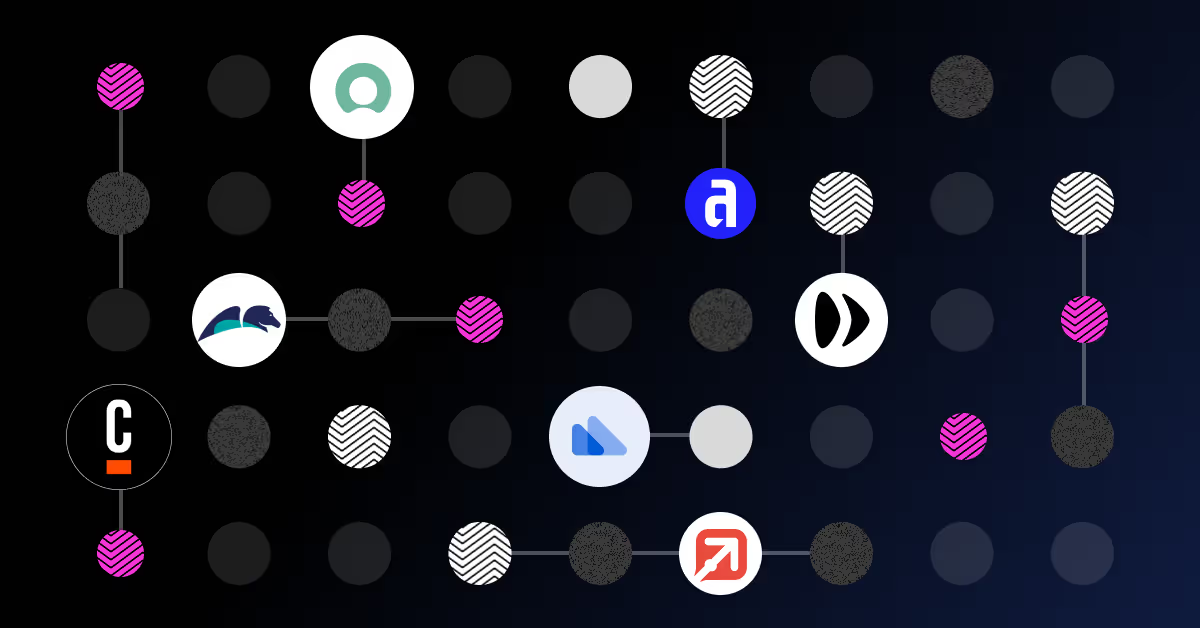Tired of manual data entry? AI-enabled data extraction is here

Are you tired of spending your time manually sifting through emails and filling in forms for employee onboarding, invoice processing, insurance policies, and other critical service tasks?
Well, your prayers have been answered because we’ve built an AI-enabled solution that can automatically extract data from emails and auto-populate forms. Our progressive solution slashes the time spent on monotonous tasks such as data entry, and gives you more bandwidth to spend on value-added work.
What is data extraction?
Data extraction is simply the act of retrieving specific information from a source, for example, a document, email, or database. This data is then ready to be used for whatever purpose you need, like analysis, reports, or entry into any manner of form. Once upon a time, extraction was a task that took hours of tedious data entry and cross-checking, but AI has arrived to revamp the whole procedure.
How does AI data extraction actually work?
AI data extraction or entity recognition works by using Natural Language Understanding patterns to recognise key ‘features’ or entities within a block of text. For example, an email. Typically data extraction is conducted with the use of a large trained model and has been great for finding things like: proper names, locations, dates and times etc, but has been less accurate when locating more domain specific terms and entities. For instance, within a medical or legal email there may be certain domain specific entities you want to understand, but the implemented model is too general. This is where EnateAI steps in, implementing LLMs (Large Language Models) alongside our workflow orchestration platforms means that we are able to quickly map entities within your data to the Enate platform, saving critical human time reading and processing email.
Example use case: Processing claims in the insurance industry and being able to extract the claimants name, their claim number and the content of the claim directly from a submission enables their claim to be processed faster.
The benefits of AI-enabled data extraction
Any business dealing with large volumes of emails, service requests, invoices, and other documents stands to benefit from EnateAI. Our AI-enabled solution intelligently scans forms and text, extracting relevant data, and processing it as required.
- Reduction in manual work
- Heightened efficiency
- Improved accuracy
- Reduced risk of human error
- Streamlined workflows
- More time to focus on customer success
AI data extraction applications across industries
Finance and banking
This is an area where accuracy is vital and mistakes cause major headaches. AI data extraction alleviates this stress, able to quickly pick out the necessary information from receipts, invoices, loan applications, financial statements, and any other financial paperwork, in a fraction of the time and with minimal errors.
Healthcare and pharmaceuticals
Healthcare providers must be able to access patient data quickly and easily to deliver a high standard of care. By automating data extraction from medical records and other forms, this information is readily available to them. Plus the reduction in administrative work gives healthcare workers more time to focus on patient care.
Retail and e-commerce
One of the most important aspects of retail and e-commerce businesses is customer experience, and a big part of that experience is the speed and efficiency of the service they receive. Manually managing purchase orders, inquiries, and inventory management can slow everything down. AI data extraction, however, expedites every step, preventing delays and costly mistakes, which in turn means happier customers.
Legal and compliance
Between legal documents, regulatory filings, contracts, and a host of other paperwork, legal and compliance is an area that gains huge time savings from automated AI data extraction. Less time spent on manual review and a lower risk of errors means compliance and legal standards are met without the usual hassle.
Historically, entity and feature extraction hasn’t cut the mustard
To date, entity or feature recognition has been constrained by the data available for training the underlying model. Typically, these models have been owned by large cloud platform providers and offered as a general service to consumers. Whilst this meant that the traditional cost of a lengthy machine learning (MLOps) pipeline had been removed (collecting data, cleaning data, training, testing etc), the models have often been highly general. Previously, challenges arose in accurately identifying specific domain language and entities, resulting in variable accuracy. This often prolonged development cycles for consuming services or lengthy projects that might not lead to entity recognition adoption.
Best practices for implementing AI data extraction
Select which tasks to automate
To start, you need to identify those processes where you want to automate data extraction. It’s a good idea to begin with a high-volume task that will have big efficiency rewards, such as invoices or customer emails. Knowing your objectives will help guide you in the next steps.
Choose the right AI data extraction tool
Look for a model that is scalable and will tailor to your industry and the specific needs of your business. A generic model can handle common data types, but for domain specificity, you need a tool that is integrated with LLMs and able to handle specialised data, like legal documents or medical records. These models can perform to a high degree of accuracy across sectors.
Integrate with existing systems
Uninterrupted data flow is vital for data extraction, so you need a tool that will integrate with your current platforms, like your document management system or CRM. Manual intervention is then minimised and automation will do all the work for you, allowing the extraction tool to bring the maximum benefit.
Conduct pilot testing
Before you launch full steam ahead, test a small sample dataset to assess how the AI model performs and establish if there are any issues that need to be addressed. A good model should be working to a high degree of accuracy right out of the gate, but this gives you the opportunity to make any necessary changes to fix inaccuracies or other problems.
Provide training for your team
The right tool should be accessible and easy to use for everyone, but it’s still important to provide sufficient training so that your team feels confident using the new AI system. Training should give them an understanding of how it works, how they can use it for specific tasks, and how to troubleshoot any problems.
The future of AI data extraction
The automation of data extraction is undoubtedly here to stay, but there are other innovations set to shake things up even more. Enhanced Natural Language Processing (NLP) has introduced the ability for AI systems to comprehend the context and nuance of the extracted data, further improving accuracy – especially for more complex data like customer emails.
AI data extraction models will also evolve to include decision-making capabilities, interpreting data and suggesting next actions, further speeding up various tasks. Another area likely to develop quickly is ethical and responsible AI practices. Steps will be taken to address biases and further strengthen data privacy as these tools become more widespread, alleviating current hesitancy around AI and keeping pace with cyber security threats.
EnateAI for data extraction
With EnateAI's integration with LLMs, powered by extensive data trained across diverse domains and industry-specific language, the need to repeatedly enhance or expand services for new feature extraction is eliminated. Trained on extensive datasets across diverse domains such as legal, medical, and insurance, LLMs possess the capability to comprehend various natural expressions. EnateAI automates the process, seamlessly aligning with your defined data in the Enate platform.
EnateAI - 5 AI features in one
Email data extraction is just one of 5 fantastic EnateAI features. EnateAI has been specifically built to elevate operational efficiency and can effortlessly categorize emails, perform sentiment analysis, comprehend foreign languages and automate queries.
Embrace a smarter and more effective way of working, empowering your service team to achieve more in less time, and ultimately, enhancing overall customer satisfaction. To see for yourself what Enate AI can do for your business, book a demo today.
AI data extraction FAQs
What is the difference between AI data extraction and data scraping?
On the surface, AI data extraction and data scraping are very similar. They both involve retrieving information, but their capabilities and methods of achieving this differ. With data scraping, data is automatically collected from sources like websites, usually in a structured format, like HTML, and subject to predefined rules.
AI data extraction, on the other hand, employs advanced algorithms and machine learning to retrieve and interpret information from more diverse and even unstructured sources – think emails, PDFs, or scanned documents. These tools can understand natural language and so are far more versatile, and able to work with different data formats, which is why AI data extraction is more accurate than data scraping.
Is AI data extraction suitable for small businesses?
It certainly is. AI data extraction isn’t only for big companies, it’s easily accessible and brings just as much benefit to smaller businesses. In fact, for an organisation that has fewer resources, the impact can potentially be even greater. Many data extraction tools offer scalable options that are affordable for smaller enterprises. Those necessary tasks that take up a lot of time, like extracting data from invoices and purchase orders, can all be automated. Resources are freed up and your team, whether it contains many people or few, has more time to spend on the higher-level aspects of running a small business.
What are the potential risks associated with AI data extraction?
It's natural with any new technology to have some qualms, especially where sensitive data is concerned. Data privacy and security are important considerations when introducing AI extraction into your business. That’s why it’s important to choose a tool that has iron-clad security measures that control access and protect against data breaches.
Another potential pitfall is found in any models trained on poor data. This is more of a risk if you decide to try and train a model in-house; it requires massive amounts of data and needs to be overseen by experts in the field. Plus, it’s prohibitively costly to achieve and in most cases unnecessary. An off-the-shelf option that’s integrated with LLMs will bring better results for almost every industry, at a fraction of the price.
It’s also important to bear in mind that an over-reliance on AI systems can also be risky. Even though these models are advanced and accurate, proper oversight must be maintained to prevent errors and misinterpretations from slipping by unnoticed. The performance of any AI tool must be closely watched to make sure it continues to operate both effectively and ethically.
How can AI handle complex and unstructured data formats?
AI data extraction is excellent at handling many forms of complicated and unstructured data thanks to its use of Natural Language Processing (NLP) and machine learning capabilities. The vast data sets that these models are trained on include many data types, which teaches them to identify patterns, context, and the relationships between words. They can even extract information from scanned, hand-written documents or poorly spelled emails. This comprehension of natural language means they can handle most types of data thrown at them, only requiring human intervention in minimal cases.
What level of customization is possible with AI data extraction solutions?
Because AI data extraction tools use machine learning and natural language processing, they are highly customizable to the needs of different industries and businesses. These tools can be tailored to recognize and extract the specific information you want, adjusting the keywords or phrases as needed. They can also be integrated into your existing software and workflows, making extraction super simple. Altogether, this means they are great for everything from processing legal documents to managing customer emails, making them adaptable to any industry.





